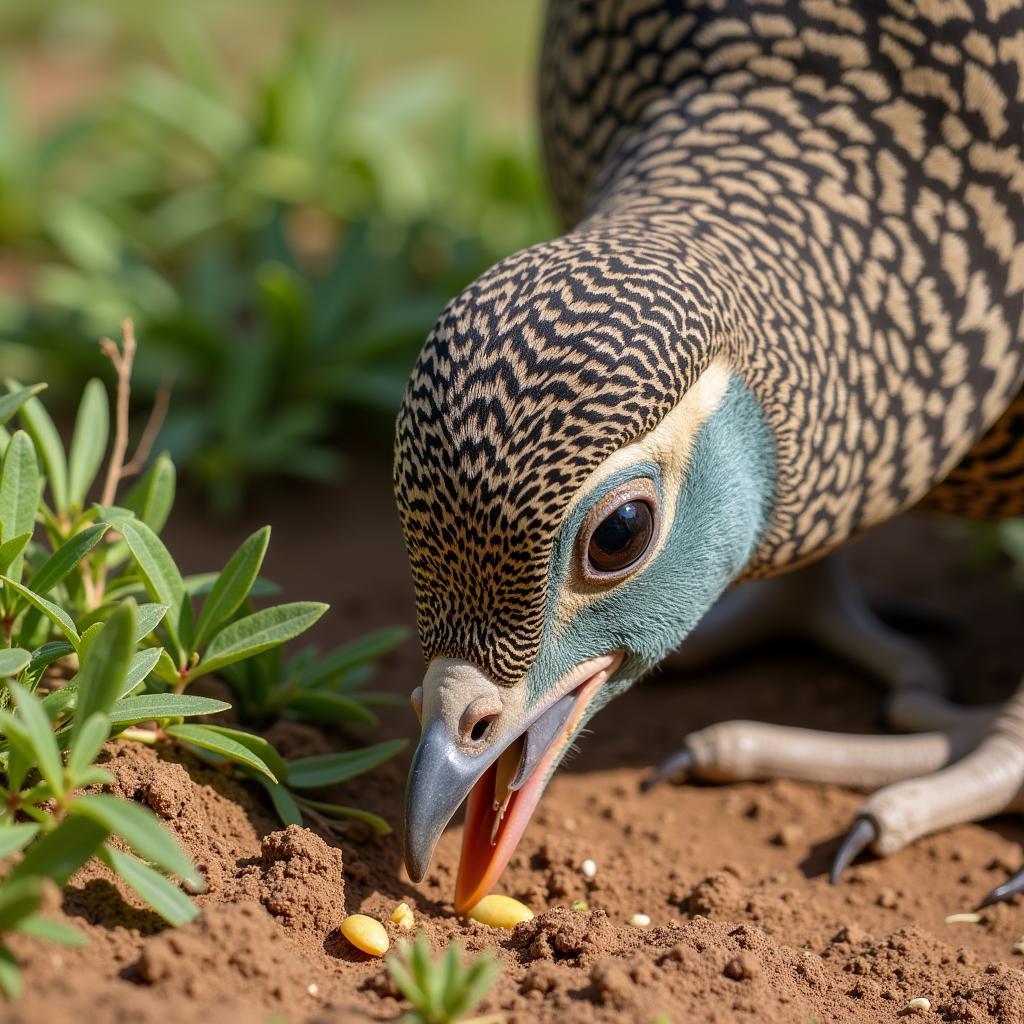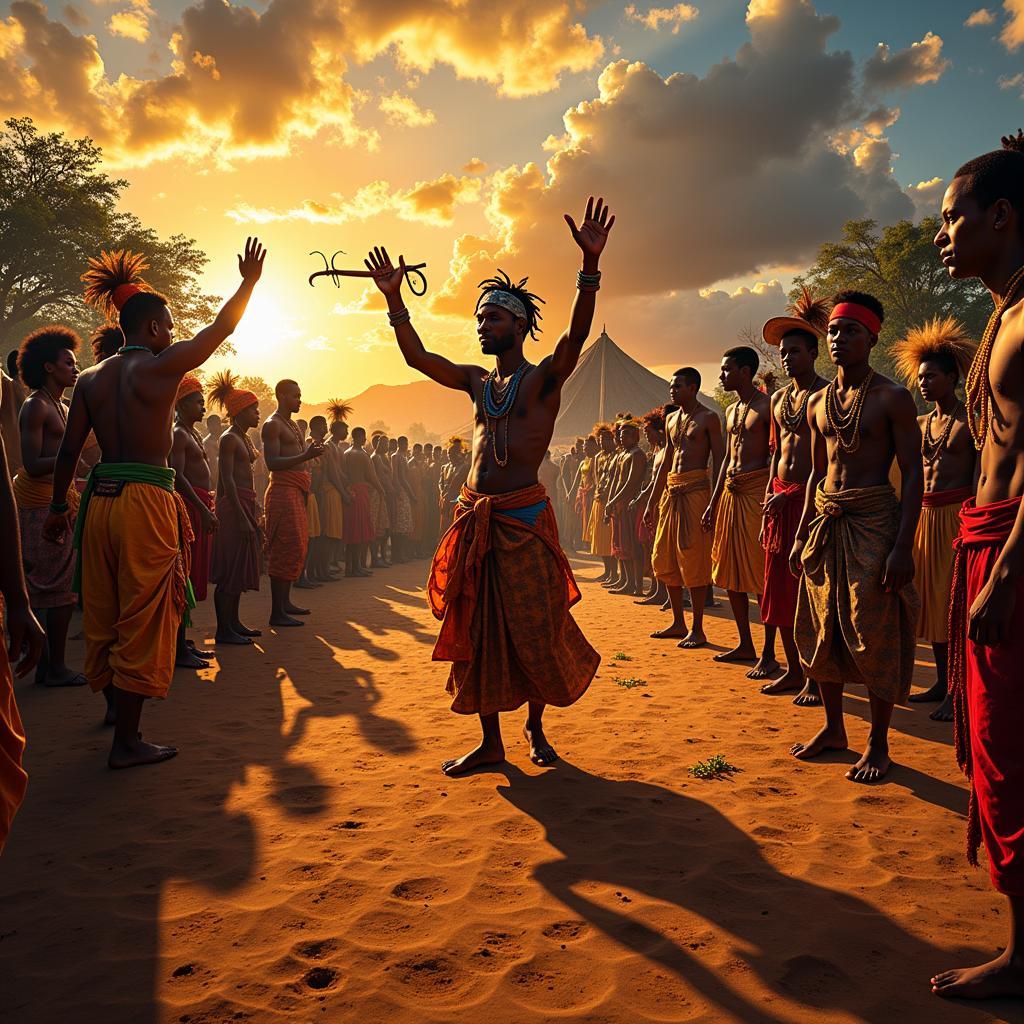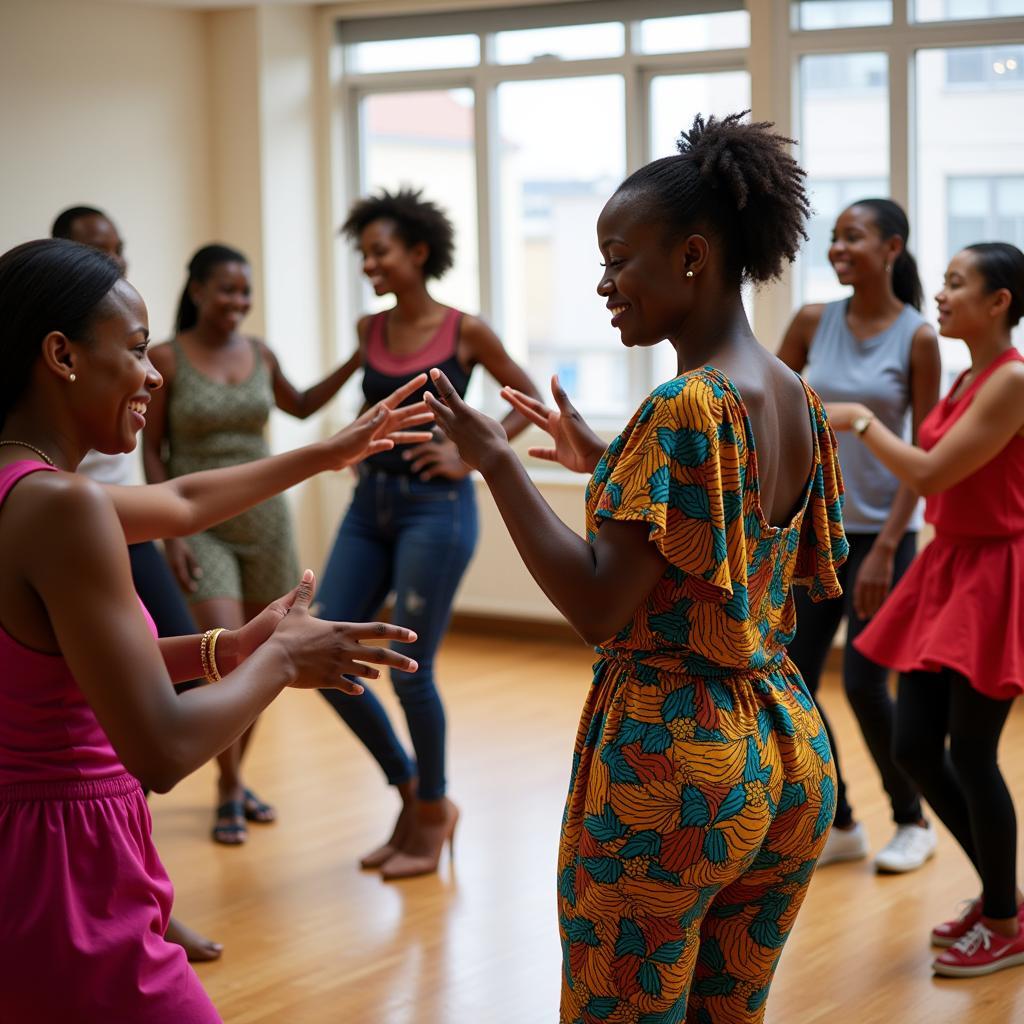Unveiling the Allure of the African Ruby
African Ruby, a term often used in the gem trade, sparks curiosity and intrigue. While not a true ruby in the gemological sense, the term typically refers to various red gemstones sourced from Africa, often garnets like rhodolite or pyrope. Understanding the nuances of this terminology is crucial for both enthusiasts and buyers. Let’s delve into the captivating world of these vibrant red gems and explore their origins, characteristics, and significance.
The African continent is a treasure trove of diverse gemstones, and red gems hold a special place in many cultures, symbolizing passion, vitality, and power. While the term “African ruby” isn’t scientifically accurate, it’s commonly used to denote red gems mined in Africa. This practice often leads to confusion, particularly for those unfamiliar with gemology. One should be aware of the specific gem variety they are purchasing. Understanding this distinction is key to making informed decisions and appreciating the true nature of these beautiful stones. It’s important to note that true rubies, while found in Africa, are distinct from the stones generally marketed as “African rubies.”
Decoding the “African Ruby”: Understanding the Terminology
The term “African ruby” often serves as a blanket term encompassing various red gemstones. Most commonly, it refers to different types of garnet, particularly pyrope and rhodolite. These garnets possess a rich red hue, reminiscent of rubies, which explains the market terminology. It is vital to understand this distinction to avoid misconceptions about the gem’s value and properties. While beautiful and desirable in their own right, these garnets are generally less valuable than true rubies. However, their vibrant color and durability make them attractive alternatives. Check out the african amethyst octagon for another beautiful gemstone from Africa.
Why the Name “African Ruby”?
The use of “African Ruby” likely stems from marketing strategies aimed at associating the stones with the allure and mystique of rubies. The name has gained traction in the marketplace, making it essential for buyers to be well-informed. While the name suggests a connection to rubies, it’s crucial to remember that these are distinct gem varieties.
Exploring the True Gems of Africa: Beyond the “Ruby”
Africa is a significant source of genuine rubies, particularly from countries like Mozambique and Madagascar. These rubies, formed from the mineral corundum, are highly prized for their exceptional color and rarity. They are distinct from the garnets often marketed as “African rubies.” The discovery of significant ruby deposits in Mozambique has made it a major player in the global ruby market. If you are interested in the pricing of these stones, more information can be found about african ruby price.
The Richness of African Gemstones
Beyond rubies and garnets, Africa yields a plethora of other stunning gemstones. From the vibrant greens of tsavorite garnet to the deep blues of tanzanite, the continent’s geological diversity is reflected in its spectacular gem production. These gemstones, each with unique properties and beauty, contribute significantly to the global gem trade.
Caring for Your “African Ruby” (Garnet)
Whether you own a garnet referred to as an “African ruby” or a genuine ruby, proper care is essential to maintain its beauty and longevity. Garnets are relatively durable gemstones, making them suitable for everyday wear. However, they should be protected from harsh chemicals and extreme temperature changes. Regular cleaning with warm, soapy water and a soft brush is recommended. Learn more about vibrant african color scheme inspired by the continent’s rich gemstone palette.
Dr. Aminata Sow, a renowned gemologist from Senegal, advises, “While the term ‘African ruby’ is common in the trade, it’s important to understand the true nature of the gem you are acquiring. Garnets, often labeled as ‘African rubies,’ are beautiful gemstones in their own right, but they are distinct from true rubies.”
Identifying an “African Ruby”
Distinguishing garnets from rubies requires careful examination. Garnets generally exhibit a deeper, more saturated red hue, often with hints of purple or brown. Rubies, on the other hand, tend to have a brighter, more fluorescent red. Consulting a qualified gemologist is always recommended for accurate identification and appraisal.
Conclusion: Appreciating the “African Ruby” and Beyond
The term “African ruby” adds a layer of mystique to the world of gemstones. While it’s crucial to understand the gemological realities behind the name, the vibrant red gems from Africa, whether garnets or true rubies, possess undeniable beauty and cultural significance. By understanding the nuances of this terminology, we can appreciate the unique characteristics of each gem and make informed choices. The African ruby reminds us of the rich diversity of gemstones found within this captivating continent.
FAQ
- What is an African ruby? An “African ruby” is a trade term, often referring to red garnets found in Africa, not true rubies.
- Where are real rubies found in Africa? Mozambique and Madagascar are significant sources of genuine rubies.
- Are African rubies valuable? While beautiful, garnets marketed as “African rubies” are generally less valuable than true rubies.
- How do I care for an African ruby? Clean with warm, soapy water and a soft brush. Avoid harsh chemicals and extreme temperatures.
- How can I tell the difference between a garnet and a ruby? Garnets often have a deeper red with hints of purple or brown, while rubies are brighter. Consult a gemologist for accurate identification.
- Are there other gemstones found in Africa? Yes, Africa is a source of many gemstones, including tsavorite garnet, tanzanite, emerald, and amethyst.
- Why is the term “African ruby” used? It’s likely a marketing tactic to associate the garnet with the allure of rubies.
You might also be interested in reading about the african peacock, a symbol of beauty and royalty in several African cultures.
When you need assistance, please contact us via Phone: +255768904061, Email: [email protected] Or visit our address: Mbarali DC Mawindi, Kangaga, Tanzania. We have a 24/7 customer service team.


